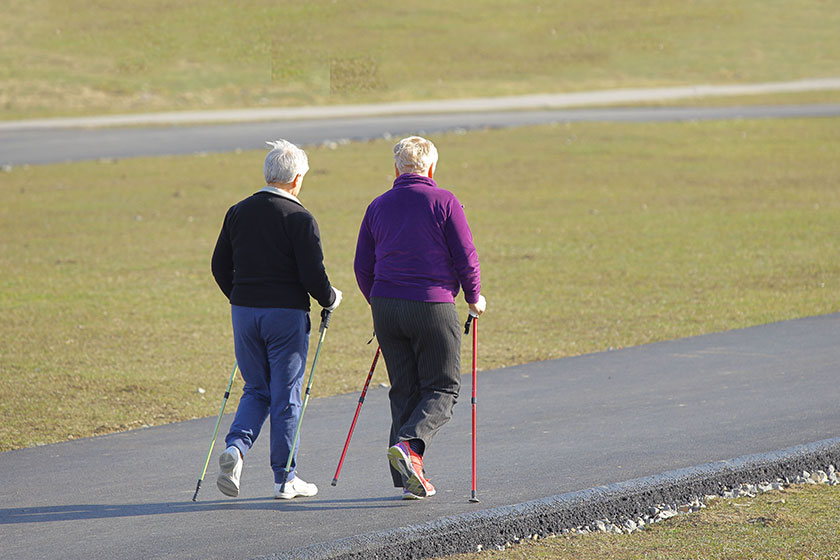Exercise is a critical component of a healthy lifestyle, regardless of age. Yet, when it comes to older adults, there are numerous stereotypes of exercising that can deter them from staying active. These misconceptions not only undermine the importance of physical activity in later years but also prevent many from experiencing the benefits it offers. This article aims to debunk these stereotypes and encourage a more active lifestyle among the elderly, particularly those in retirement communities.
Stereotype 1: “Exercise Is Dangerous for Older Adults”
One common misconception is that exercise poses a significant risk of injury to older adults. While it is true that the elderly should approach physical activity with caution, this does not mean exercise is inherently dangerous. In fact, with proper guidance and tailored exercise programs, the benefits far outweigh the risks. Many retirement communities offer services and amenities that include safe, supervised exercise routines specifically designed for older adults.
Stereotype 2: “Older Adults Can’t Build Muscle”
The belief that older adults cannot gain muscle mass is another stereotype that needs addressing. While muscle-building might be slower compared to younger individuals, strength training is still highly effective for the elderly. Resistance exercises can increase muscle mass and strength, which is crucial for maintaining independence and reducing the risk of falls.
Stereotype 3: “Physical Activity Is Only About Cardiovascular Health”
While cardiovascular health is a significant benefit of exercise, it is not the only one. Physical activity for older adults also improves mental health, enhances mobility, boosts cognitive function, and can even foster social connections in a retirement community setting. Activities like group exercise classes provide social engagement opportunities, contributing to overall well-being.
Stereotype 4: “It’s Too Late to Start Exercising”
The belief that there is a ‘right age’ to start exercising is misleading. It is never too late to begin. Starting an exercise routine later in life can still yield significant health benefits, including improved endurance, strength, and flexibility. Retirement communities often offer a variety of senior living options that encourage residents to start exercising, regardless of their age or previous activity levels.
Stereotype 5: “Exercise Must Be Intense to Be Effective”
There is a common misconception that exercise must be intense to yield results. However, for older adults, moderate and consistent physical activity can be highly beneficial. Activities like walking, swimming, or light aerobics can significantly improve health without the need for high-intensity workouts.
Stereotype 6: “Physical Activity Is Boring”
This stereotype often stems from a lack of awareness about the variety of exercise options available. Retirement communities today offer an array of fun and engaging physical activities tailored to the interests and abilities of their residents. From dance classes to water aerobics, the options are diverse and enjoyable.
Stereotype 7: “Exercise Won’t Make a Difference at My Age”
Some believe that exercise will not significantly impact their health due to their age. This is far from the truth. Regular physical activity can greatly enhance the quality of life for older adults, including improving sleep quality, reducing the risk of chronic diseases, and enhancing mood and cognitive function.
Stereotype 8: “I’m Too Frail for Exercise”
While frailty might require a more cautious approach to exercise, it does not mean physical activity should be avoided. Tailored exercise programs can help improve balance, strength, and flexibility, even for those who are frail. It is about finding the right type and level of activity.
Stereotype 9: “Exercise is Only Physical”
Exercise benefits are not just physical; they are also mental and emotional. Regular physical activity can help combat depression, anxiety, and loneliness, especially important in a retirement community setting. Group exercises can provide social interaction and a sense of community, which are vital for mental and emotional well-being.
Stereotype 10: “Exercise Doesn’t Help with Age-Related Conditions”
A prevalent misconception is that exercise does not aid in managing or alleviating age-related health conditions. This stereotype often leads to a defeatist attitude towards physical activity among older adults.
However, research has consistently shown that regular exercise can play a vital role in managing conditions such as arthritis, diabetes, heart disease, and even cognitive impairments like dementia. Tailored exercise programs, often available in retirement communities, can help mitigate symptoms, improve mobility, and enhance the overall quality of life for those with age-related conditions.
Debunking these stereotypes of exercising among the elderly is crucial in promoting a healthier, more active lifestyle for older adults. Exercise, when done safely and appropriately, can significantly enhance the quality of life for those in retirement communities. It is essential to recognize that age should not be a barrier to leading an active and fulfilling life. With the right approach and support, exercise can be a rewarding and enjoyable part of daily life for the elderly, contributing to their overall health and happiness.







